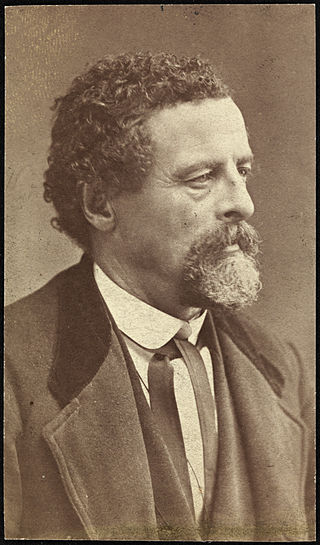A trade union or labor union, often simply referred to as a union, is an organisation of workers whose purpose is to maintain or improve the conditions of their employment, such as attaining better wages and benefits, improving working conditions, improving safety standards, establishing complaint procedures, developing rules governing status of employees and protecting and increasing the bargaining power of workers.

The Norwegian Confederation of Trade Unions is a national trade union center, decidedly the largest and probably the most influential umbrella organization of labour unions in Norway. The 21 national unions affiliated to the LO have almost 1,000,000 members of a Norwegian population of 5 million. The majority of affiliated unions organizes traditional blue collar workers, but the largest affiliate is the Norwegian Union of Municipal and General Employees which makes up more than a third of all members. LO is affiliated to the ITUC and the ETUC.
LO, The Danish Confederation of Trade Unions was founded in 1898 and was an umbrella organisation for 18 Danish trade unions. At the end of 2018, it merged into the new Danish Trade Union Confederation.

The Swedish Trade Union Confederation, commonly referred to as LO, is a national trade union centre, an umbrella organisation for fourteen Swedish trade unions that organise mainly "blue-collar" workers. The Confederation, which gathers in total about 1.5 million employees out of Sweden's 10 million people population, was founded in 1898 by blue-collar unions on the initiative of the 1897 Scandinavian Labour Congress and the Swedish Social Democratic Party, which almost exclusively was made up by trade unions. In 2019 union density of Swedish blue-collar workers was 60%, a decline by seventeen percentage points since 2006. A strongly contributing factor was the considerably raised fees to union unemployment funds in January 2007 made by the new centre-right government.

The Cooperation Committee of the Nordic Worker's Movement, better known by its abbreviation SAMAK, is an alliance of social democratic parties and labour councils in the Nordic countries. SAMAK consists of all social democratic parties and trade union organisations in the Nordic countries, including in Greenland, the Faroe Islands and Åland. The current President of the Committee as of 2021 is Jonas Gahr Støre, the leader of the Norwegian Labour Party and Prime Minister of Norway. Jan-Erik Støstad is the General Secretary, and Kjersti Stenseng is Chair of the Board.

The Fafo Research Foundation, also known as the Fafo Foundation or just Fafo, is a Norwegian research foundation and owner of the research institute: The Fafo Institute for Labour and Social Research. The institute conducts social research both in Norway and internationally. Fafo has its main office in Oslo and an office in Beijing.
Unions have been compared across countries by growth and decline patterns, by violence levels, and by kinds of political activity.

Marcus Møller Thrane was a Norwegian author, journalist, and the leader of the first labour movement in Norway. It was later known as the Thrane movement (Thranebevegelsen).
FTF – Confederation of Professionals in Denmark was founded in 1952 and was one of the three national trade union centers, with about 80 Danish trade unions affiliated.

The Norwegian Union of Food, Beverage and Allied Workers is a trade union in Norway.

Rolf Terje Klungland is a Norwegian politician for the Labour Party.

The Nordic model comprises the economic and social policies as well as typical cultural practices common in the Nordic countries. This includes a comprehensive welfare state and multi-level collective bargaining based on the economic foundations of social corporatism, and a commitment to private ownership within a market-based mixed economy—with Norway being a partial exception due to a large number of state-owned enterprises and state ownership in publicly listed firms.

The economy of Sweden is a highly developed export-oriented economy, aided by timber, hydropower, and iron ore. These constitute the resource base of an economy oriented toward foreign trade. The main industries include motor vehicles, telecommunications, pharmaceuticals, industrial machines, precision equipment, chemical goods, home goods and appliances, forestry, iron, and steel. Traditionally, Sweden relied on a modern agricultural economy that employed over half the domestic workforce. Today Sweden further develops engineering, mine, steel, and pulp industries, which are competitive internationally, as evidenced by companies like Ericsson, ASEA/ABB, SKF, Alfa Laval, AGA, and Dyno Nobel.
The Confederation of Vocational Unions is a national trade union center, an umbrella organization of labour unions in Norway.
Den store barnedåpen is a 1931 Norwegian comedy film.
The union density or union membership rate conveys the number of trade union members who are employees as a percentage of the total number of employees in a given industry or country. This is normally lower than collective agreement coverage rate, which refers to all people whose terms of work are collectively negotiated. Trade unions bargain with employers to improve pay, conditions, and decision-making in workplaces; higher rates of union density within an industry or country will generally indicate higher levels of trade union bargaining power, lower rates of density will indicate less bargaining power.
Anarchism in Norway first emerged in the 1870s. Some of the first to call themselves anarchists in Norway were Arne Garborg and Ivar Mortensson-Egnund. They ran the radical target magazine Fedraheimen which came out 1877–91. Gradually the magazine became more and more anarchist-oriented, and towards the end of its life it had the subtitle Anarchist-Communist Body. The anarchist author Hans Jæger published the book "The Bible of Anarchy" in 1906, and in recent times Jens Bjørneboe has been a spokesman for anarchism – among other things in the book "Police and anarchy".
Fant is a Norwegian film from 1937 based on Gabriel Scott's 1928 novel of the same name. The film was directed by Tancred Ibsen, who also wrote the script for the film. The film premiered on December 26, 1937 at the Eldorado Cinema in Oslo.
Ringeren was a Norwegian weekly political magazine which existed between 1898 and 1899. The magazine was founded by Sigurd Ibsen and was headquartered in Kristiania, Norway.









